wind from the west, fish and bread
June 29: Feast of Sts. Peter & Paul
Gaoth an iar iasg is aran;
Gaoth a tuath fuachd is feannadh;
Gaoth an ear sneachd air beannaibh;
Gaoth a deas meas air crannaibh.Wind from the west, fish and bread;
Wind from the north, cold and flaying [fainting];
Wind from the east, snow on the hills;
Wind from the south, fruit on trees.Alexander Carmicheal, Carmina Gadelica Vol. 2 (1900)
Welcome! Whether you’re a longtime friend or a new kindred spirit here (I recommend visiting the Village Green to get your bearings), I’m delighted to be a companion to you through the liturgical year.
Please enjoy this month’s focus: a practice of attention that encourages us to deeply explore one holiday within the context of the season.
For more to supplement the rest of your midsummer days this month, flip through the June Almanac.
Pax+bonum, Kristin.
» Printable Resources
Keeping a liturgical Book of Hours binder helps me to distill all of the inspiration I find, so I can easily look to the elements that have been most nurturing for our family & community.
This month, our focal feast is a liturgical two-fer: we’re called to celebrate both St. Peter & St. Paul on the same day, and I have a packet that helps to illustrate the blending of these two church pillars…it includes:
Cover page featuring a bucking horse (a reminder of St. Paul’s conversion), a rooster (symbolizing St. Peter), and Yellow Cockscomb (a bright Midsummer flower paired with their feast)
Seven pages of prompts, information, & poetry (with illustrations and photos) to help you learn about this feast and reflect on how it intersects with your own life and landscape.
Paid members can find this (as well as my whole archive of printables) in the Scriptorium:
MIDSUMMER HOMEMAKING
“And when came the awful moment of their consummation [of martyrdom], they were separated from each other, and these pillars of the world were put in chains as the brethren groaned and wept. Then Paul said to Peter: “Peace be with you, foundation stone of the churches and shepherd of the sheep and lambs of Christ!” Peter said to Paul: “Go in peace, preacher of virtuous living, mediator and leader of the salvation of the righteous!”
Jacobus de Voragine, The Golden Legend
Midsummer is not so much a day as it is a season within a season. After we step over the threshold of Pentecost & its octave, we find ourselves in a long stretch of Ordinary Time…a space where we can easily feel unmoored, but thankfully, the Church offers us a homecoming in this new, long season.
The bonfires of Midsummer start burning as early as St. Barnabas' Day, reaching their zenith at Johnsmas and extending through the end of June…culminating in the feast of Sts. Peter & Paul, a whole festal series shaped within the Midsummer context.
And in these June holidays, our home’s hearth moves outside - taking shape in a crackling bonfire under the summer night sky.
“On the eves of St. John Baptist and St. Peter they always have in every town a bonfire…”
Sir Henry Piers (1682), quoted by Kevin Danaher in The Year in Ireland
The Church calls us to a homecoming outside of our walls, and helping us to shape that new space of community & faith are the interwoven saints celebrated at the close of June: St. Peter, Prince of the Apostles; and St. Paul, Apostle par excellence.
Pillars of the Church - Midsummer homemakers - they train that verve & energy from the Nativity of St. John the Baptist (celebrated just a few days before) into a lasting structure. They give shape and strength to the summer wildness of St. John’s tide, reminding us of our call toward placemaking, of the importance of infrastructure in cultivating lasting, faithful habits and relationships.
Through them, God calls us to come home…to practice homemaking through this Season After Pentecost - and He simultaneously breaks the barriers that confine our idea of what “home” truly is.
Naturally, we wonder…who are these Midsummer saints inviting us to a seat at the table - and why are they woven together in the calendar? Even if their names and lives feel familiar at this point, seeing St. Peter & St. Paul united in a single feast…placed at Midsummer…reveals new depths of wisdom and context.
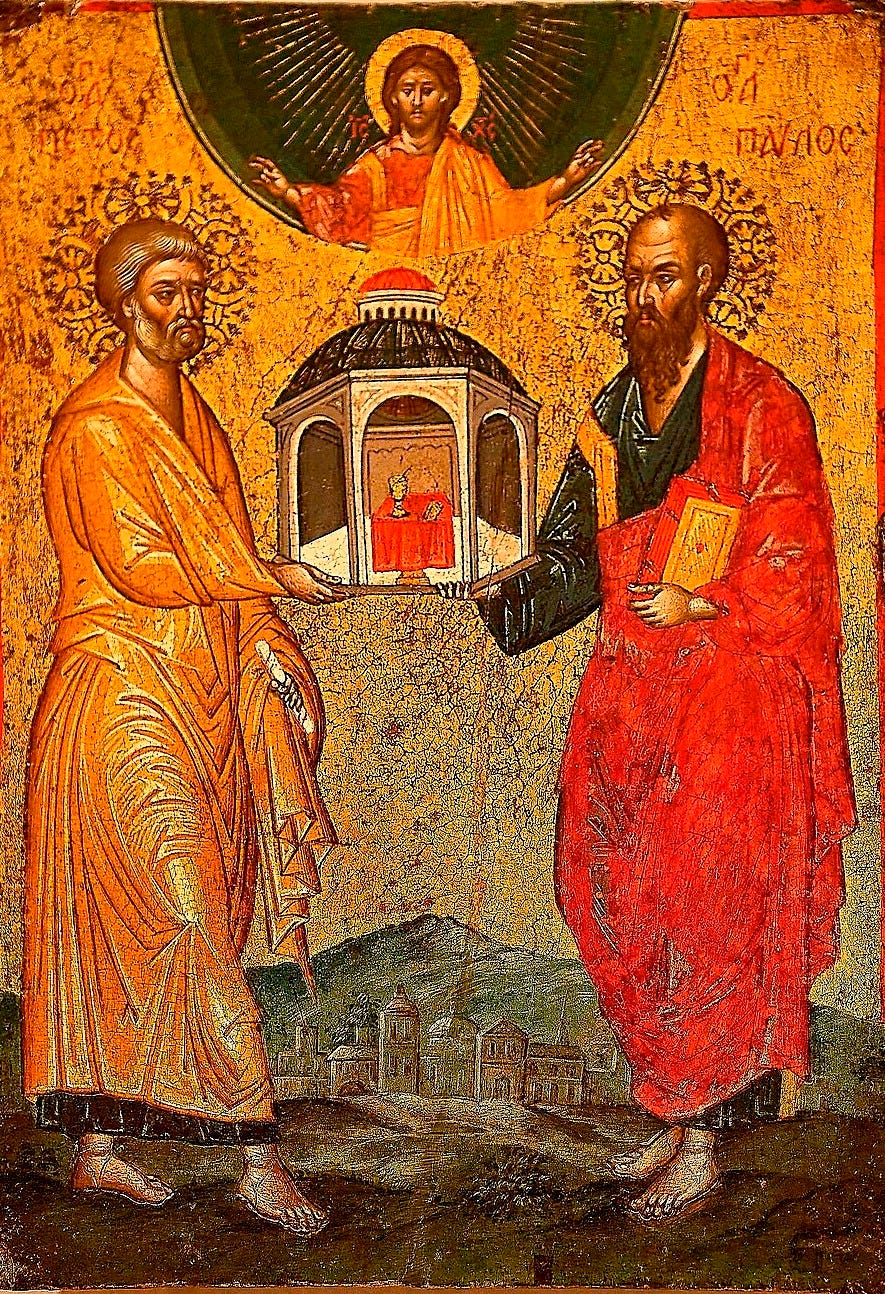
St. Peter (1 BC - ca. 64 AD) was born as Simon, son of Jonah - a fisherman from Bethsaida, a little fishing village on the northern shore of the Sea of Galilee. When he met Jesus (introduced by Simon’s brother, disciple of our other Midsummer Saint: John the Baptist), he received his new nickname directly from the Messiah: Cephas, the Aramaic word for rock. Translated into Greek, we get Petros (Πέτρος)…Peter.
When Jesus was based in Capernaum, it was this rock - St. Peter - who hosted the Lord and housed his miracles and ministry.1
Later, based in Jerusalem, Peter again hosts: he receives St. Paul, who had waited three years after his conversion to seek out St. Peter & the disciples.2
Born as Saul (5 BC - ca. 64 AD) & hailing from a Jewish family, St. Paul was a Roman citizen raised with strict Pharisaic tradition and a robust Greek education. He joined the charge against followers of Christ, and it was en route to Damascus - intending to capture Christians - that Saul experienced his famous conversion, encountering the risen Christ.
He spent the rest of his life utterly devoted to bearing Christ’s light into the world, building a “home” for this new faith in the form of letters, testimony, leadership, and theology.
How fitting, then, that St. Paul was also a tentmaker3 by trade: a crafter of homes, partnering with other tentmakers (Sts. Aquila & Priscilla) in work and in ministry.
Aquila and Prisca, together with the church in their house, send you hearty greetings in the Lord.
1 Corinthians 16:19 (ESV)
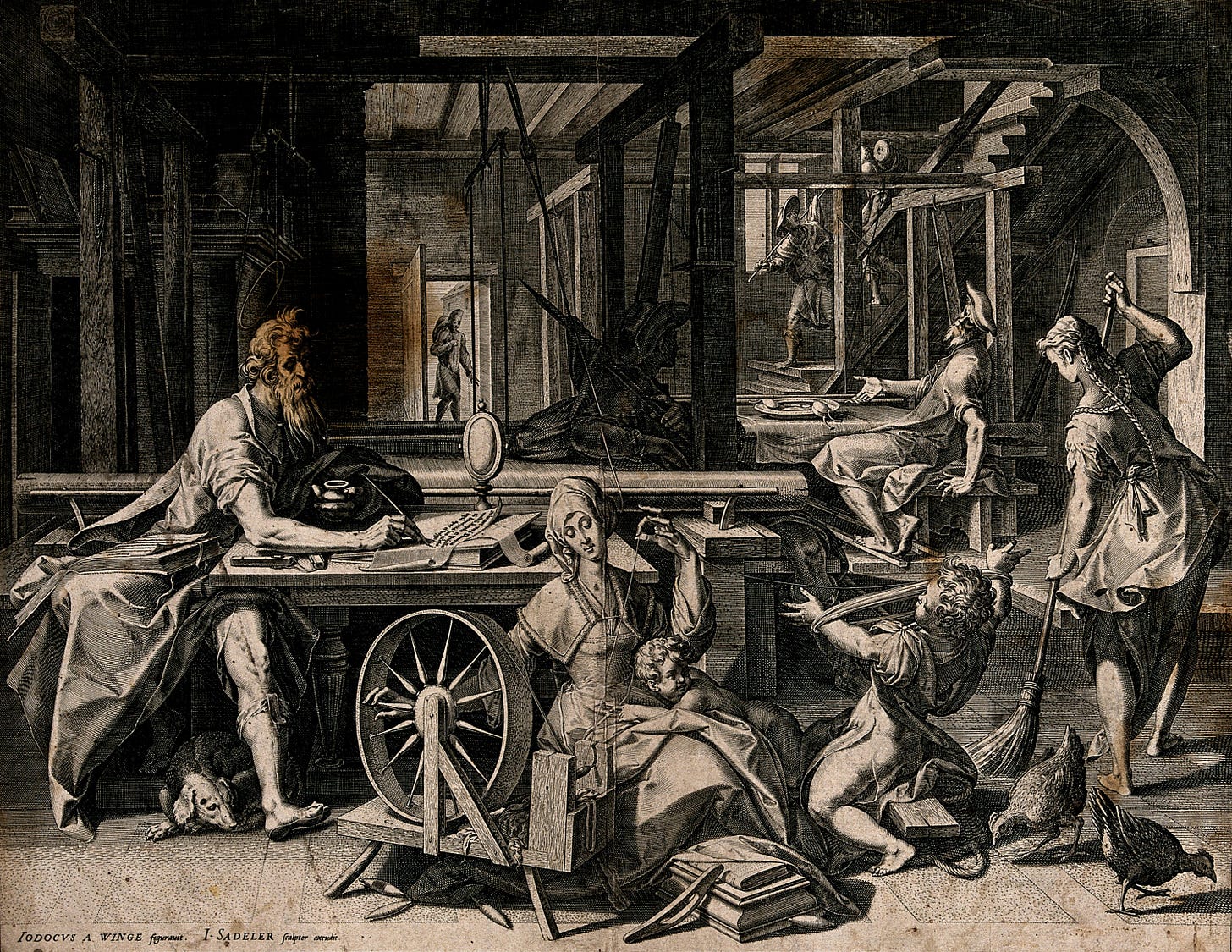
These placemakers - St. Peter, the rock, and St. Paul, the tentmaker - came from disparate backgrounds but found unity in their partnership…gathering believers around the hearth of a new faith, crafting the infrastructure of theology and formation that would last through the centuries. They’re the homemakers of our tradition, inviting us to return to our true home in Christ Jesus - not isolated in our walls, whether literal or metaphorical. Their homemaking is the sort that isn’t confined by legalism - they call us to a perspective both deep and wide, challenging the ingrained habits that tend to replace our true home in Christ with a possessive, withering sense of home.
When Paul confronts Peter about hypocrisy in the debate of clean/unclean foods, our tentmaker reminds St. Peter (and all of the faithful):
For if I rebuild what I tore down, I prove myself to be a transgressor. For through the law I died to the law, so that I might live to God.
Galatians 2:18-19 (ESV)
…it makes me wonder: did I tear down old ways of thinking, only to rebuild them? Am I homemaking as Sts. Paul & Peter would - where my home is in Christ, and everything, from my Midsummer bonfire to my hearth to the meals we eat with guests, would be manifestations of that primary home? Am I working with my loved ones to actively sharpen, change, and listen?
The calendar’s unifying story of these two foundational saints is a tale of placemaking - calling us to extend and deepen our very idea of home, taking it out of our four walls and into a summer’s evening bonfire among our neighbors, where Jesus is the hearthfire that sustains us.
So, although later centuries started to place St. Peter’s feast on June 29 and follow it with St. Paul’s feast on June 30, the early Church wove both feasts together - and many liturgical calendars have continued to retain this Midsummer legacy.
In their hagiographies, we see this connection underscored through martyrdom: though the details are hazy and highy debatable, tradition offers us a vision of Sts. Peter & Paul being martyred on the very same day in Rome.
For I was present at the moment when they were separated: after their death I saw them coming in hand in hand at the gate of the city, clothed in luminous garments and crowned with crowns of brilliance and light.
Jacobus de Voragine, attributed to Dionysius in The Golden Legend
Midsummer has arrived, a voice in the wildnerness - our beloved St. John the Baptist - just reminded us to look toward Christ, and Sts. Peter & Paul challenge us to invigorate our places & to make our homes in Jesus. And invite our neighbors to that holy bonfire, too.
In Brittany the fire of St. Peter in June called the tan-tad or ‘fire of the dead’ was lit with a pine candle by the oldest man in the area…
Niall Mac Coitir, Ireland’s Trees: Myths, Legends and Folklore
BAWMING OUR PLACES
Up with fresh garlands this midsummer morn,
Up with red ribbons on Appleton Thorn.
Come lasses and lads to the Thorn Tree today
To bawm it and shout as ye bawm it “Hurray”!R.E. Egerton Warburton, Bawming Song
In the charming village of Appleton Thorn (Cheshire, England), a hawthorn tree stands at the center of town. Surrounded by a small fence and cultivated flowers, it’s the focal piece of Midsummer celebrations during Peter & Paultide…a town tradition once held especially on June 29, but now varying.4
This particular haw is a legendary one: it’s said to be a descendant of the Glastonbury Thorn, which - folklore tells us - is an offshoot of St. Joseph of Arimathea’s staff.
Traditionally, Appleton parishioners would gather around this legendary thorn on the feast of Sts. Peter & Paul to bawm it: decorating it with ribbons, flags, garlands, bouquets…all this merriment being accompanied by singing, dancing, and (of course) food.

The etymology of bawm is a bit hazy, but it seems to come from the Middle English bawme. Related to balsam - which refers to oils, resins, and balms from resinous Commiphora trees - its meaning naturally extended to poetic descriptions that call to mind refreshment or invigoration.
So, from that little breadcrumb trail, we find that bawming suggested a refreshment of space…decorating, invigorating, enlivening our locales.
Though the thorn-bawming’s outright connection to Petertide has waned over the years, that original tie speaks volumes as I sit here pondering our twin Church pillars of St. Peter & St. Paul.
What does it look like to both deepen and expand our idea of 'home’, as Sts. Peter & Paul invite us to do during this Midsummer holiday?
To deepen our understanding of home, ultimately finding our hearth in God (“…where moths and vermin do not destroy, and where thieves do not break in and steal”5)…and to expand, stretching our homemaking beyond our four walls and into our communities?

Looking to St. Peter - the ‘rock,’ host of Jesus - and St. Paul, our tentmaker - we can find a pattern for Midsummer hospitality and homemaking. It’s a time to break down the walls of false theologies that have crept in, sweep out the cobwebs, and head outside amongst our neighbors to reimagine and invigorate our entire concept of home.
Sts. Peter & Paul were placemakers, after all; they helped to build and bawm a lasting spiritual & theological home for us all, and they also modeled the tangible homemaking of the Church…uniting Christ followers and helping to connect them to each other, to God, and to their wider communities.
What does it look like to bring some bawming to our home, our faith, our church, our neighborhood this Midsummer?
If you light that Petertide bonfire, I hope that it’s one your neighbors will be drawn to…a glimmering invitation to practice our homemaking in new ways.
READ ON
BENEDICTION
O let those prayers us avail,
Thou didst for Peter daigne,
That when our foe shall us assaile
His labour may be vaine
Yea, cast on us those powerful eyes,
That mov'd him to lament
We may bemoane with bitter cries
Our follies, and repent.
And grant that such as him succeed
For pastors of thy fold,
Thy sheepe and lambes may guide and feede,
As thou appoint'st they should ;
By his example speaking what
They out in truth to say,
And in their lives confirming that
They teach them to obey.George Wither, “St. Peter’s Day” (17th c)
How is this Midsummer finding you? Do you feel at loose ends in Ordinary Time, or are you finding a breadcrumb trail to follow? For us, it’s been a mixture of both: the days have been packed and busy, making me extra thankful for this Petertide opportunity to pause and re-align my motivations and my days.
Wishing you & yours a merry feast of Sts. Peter & Paul!
Pax et bonum,
Kristin
“And when Jesus entered Peter's house, he saw his mother-in-law lying sick with a fever. He touched her hand, and the fever left her, and she rose and began to serve him. That evening they brought to him many who were oppressed by demons, and he cast out the spirits with a word and healed all who were sick. This was to fulfill what was spoken by the prophet Isaiah: ‘He took our illnesses and bore our diseases.’” (Matthew 8:14-17 ESV)
“Then after three years I went up to Jerusalem to visit Cephas and remained with him fifteen days. But I saw none of the other apostles except James the Lord's brother. (In what I am writing to you, before God, I do not lie!)” (Galatians 1:18-20 ESV)
Acts 18:1-4
Now held on the third Saturday of June each year.
Matthew 6:20




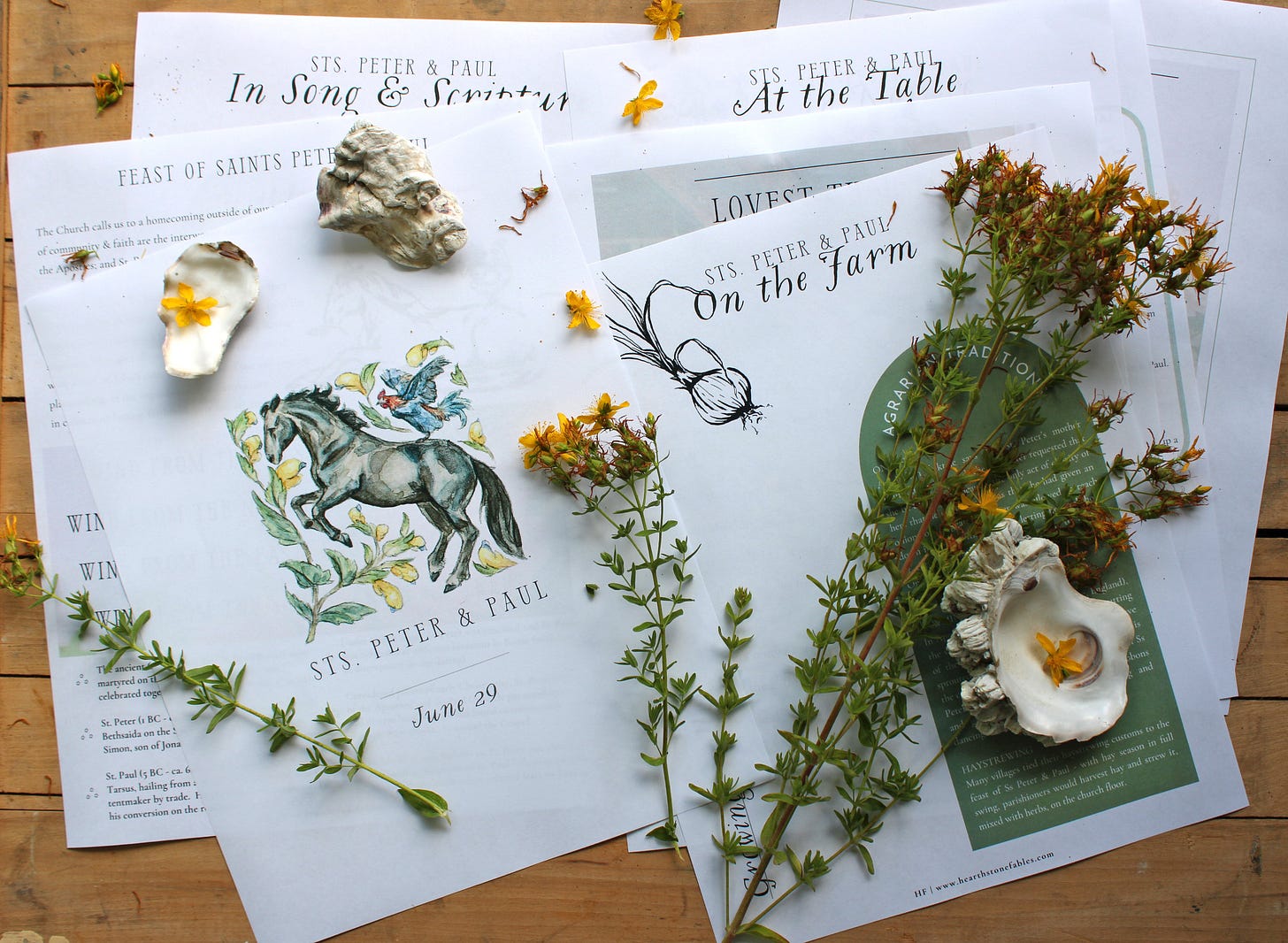

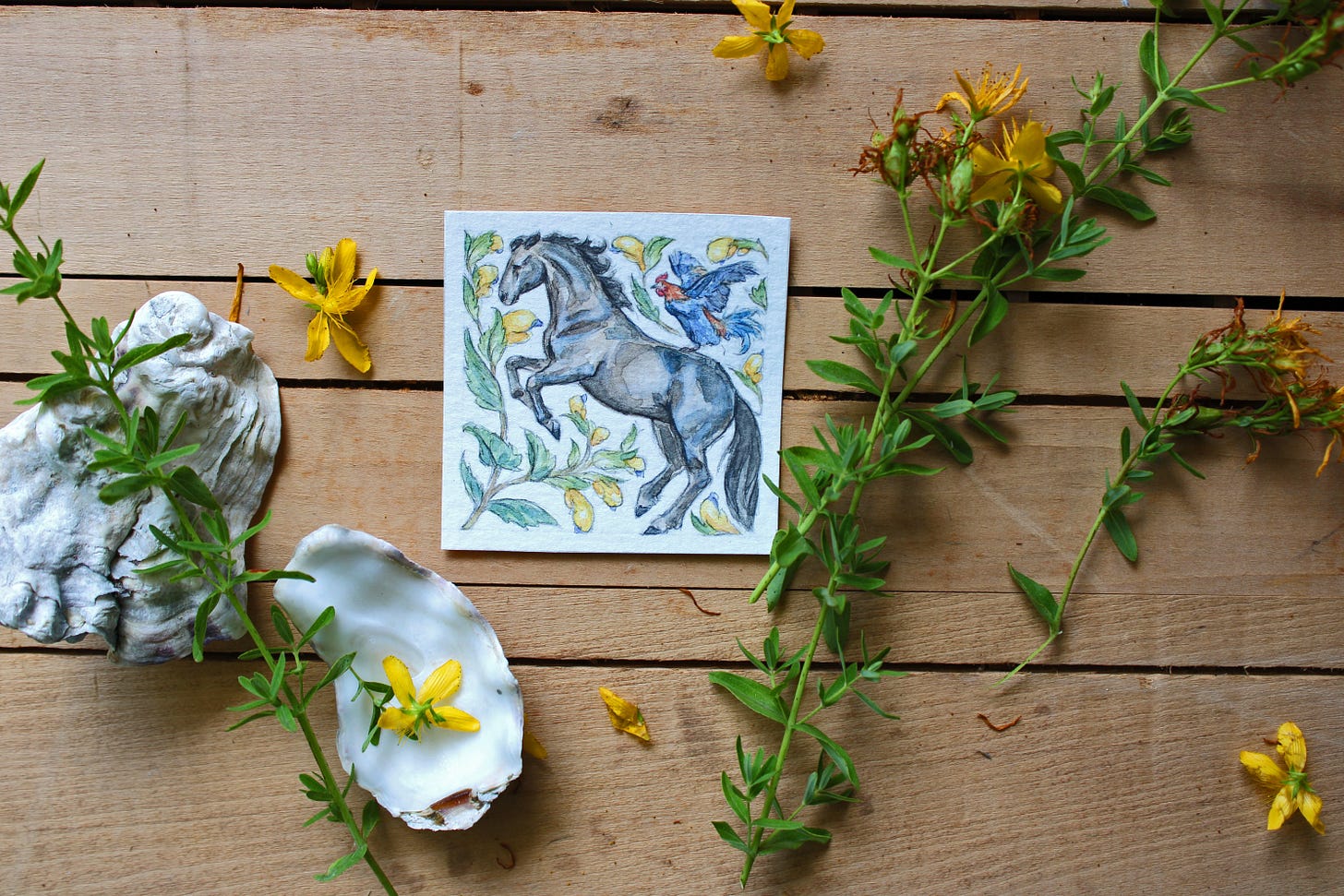


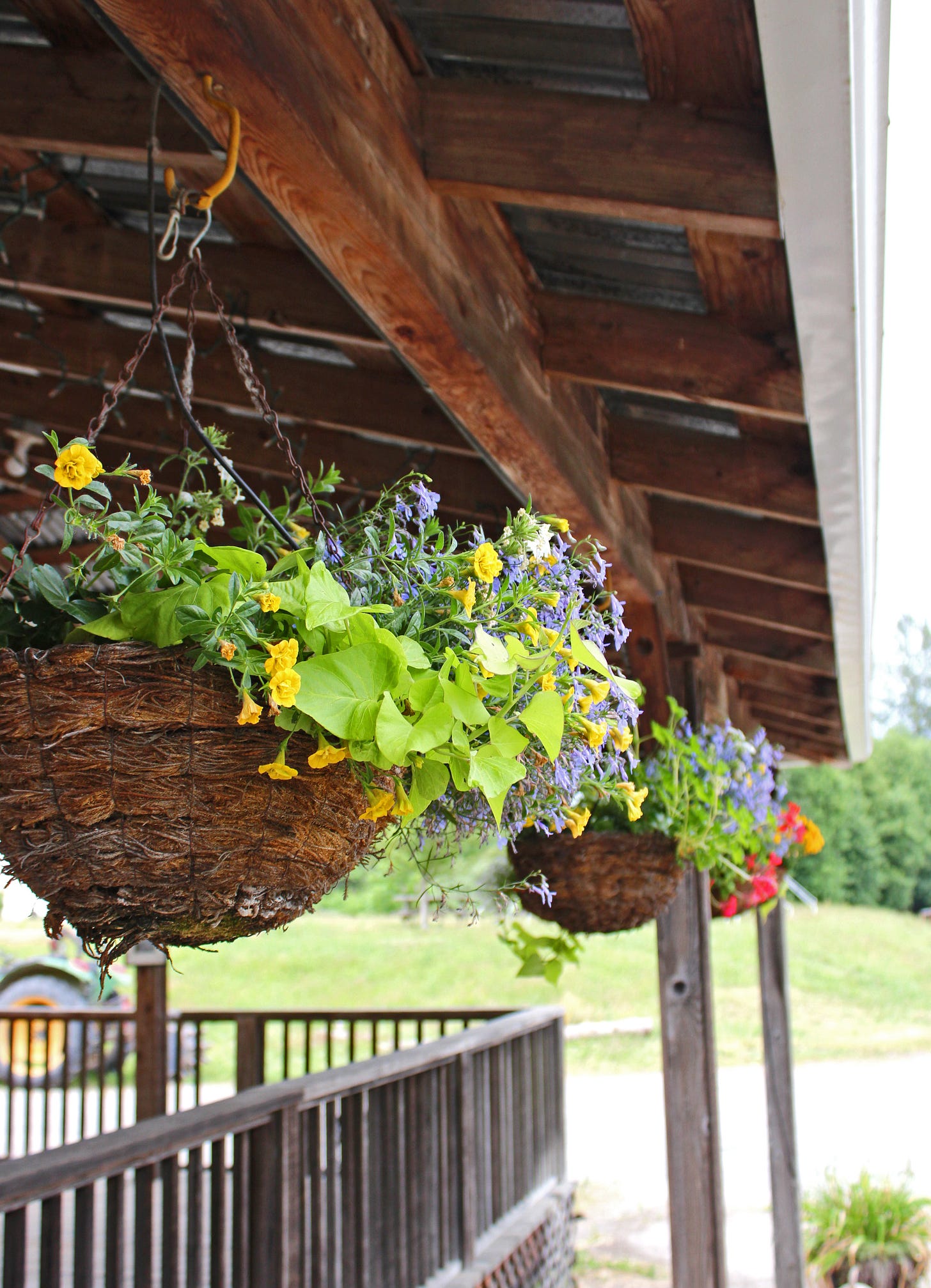
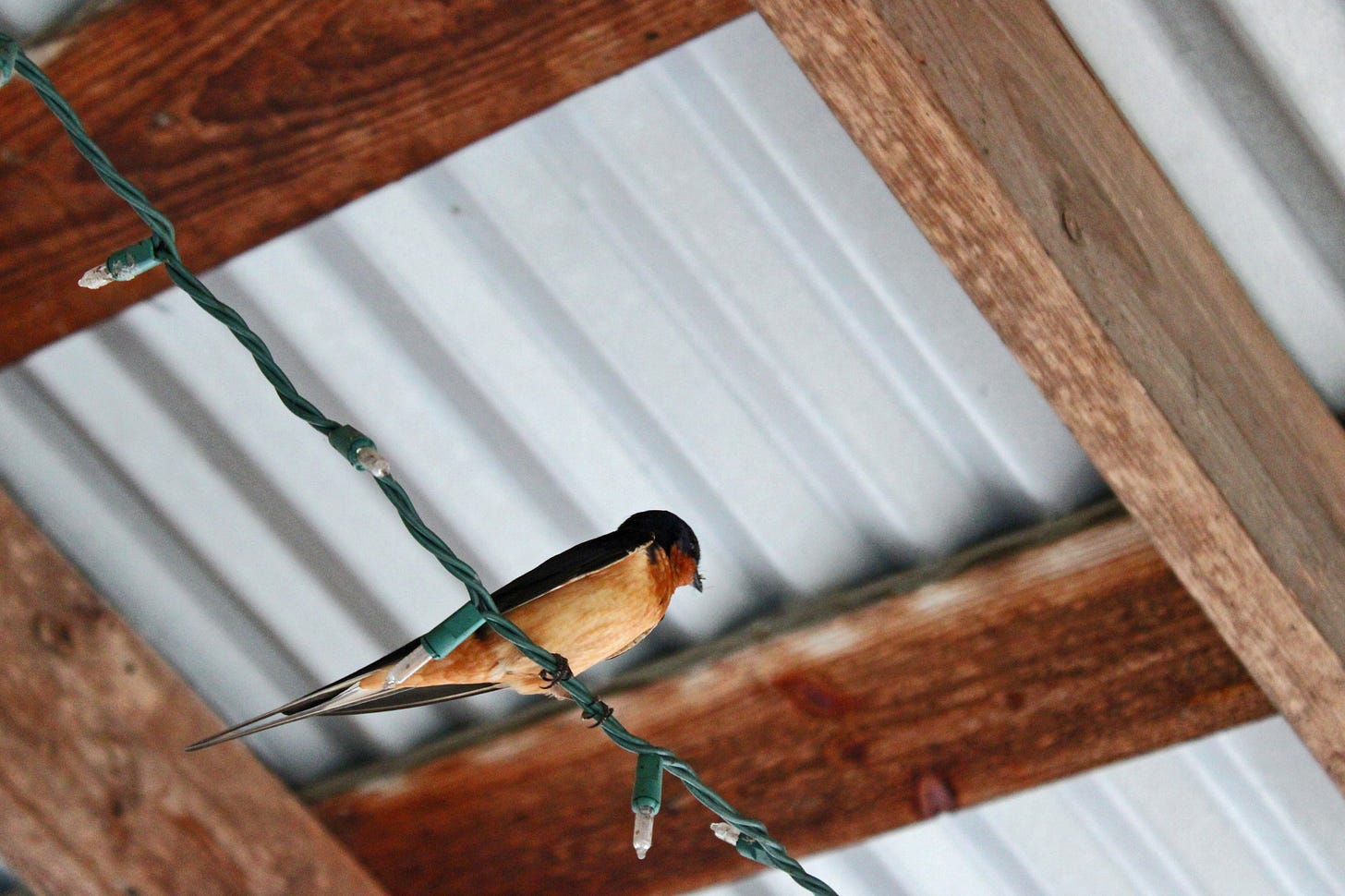



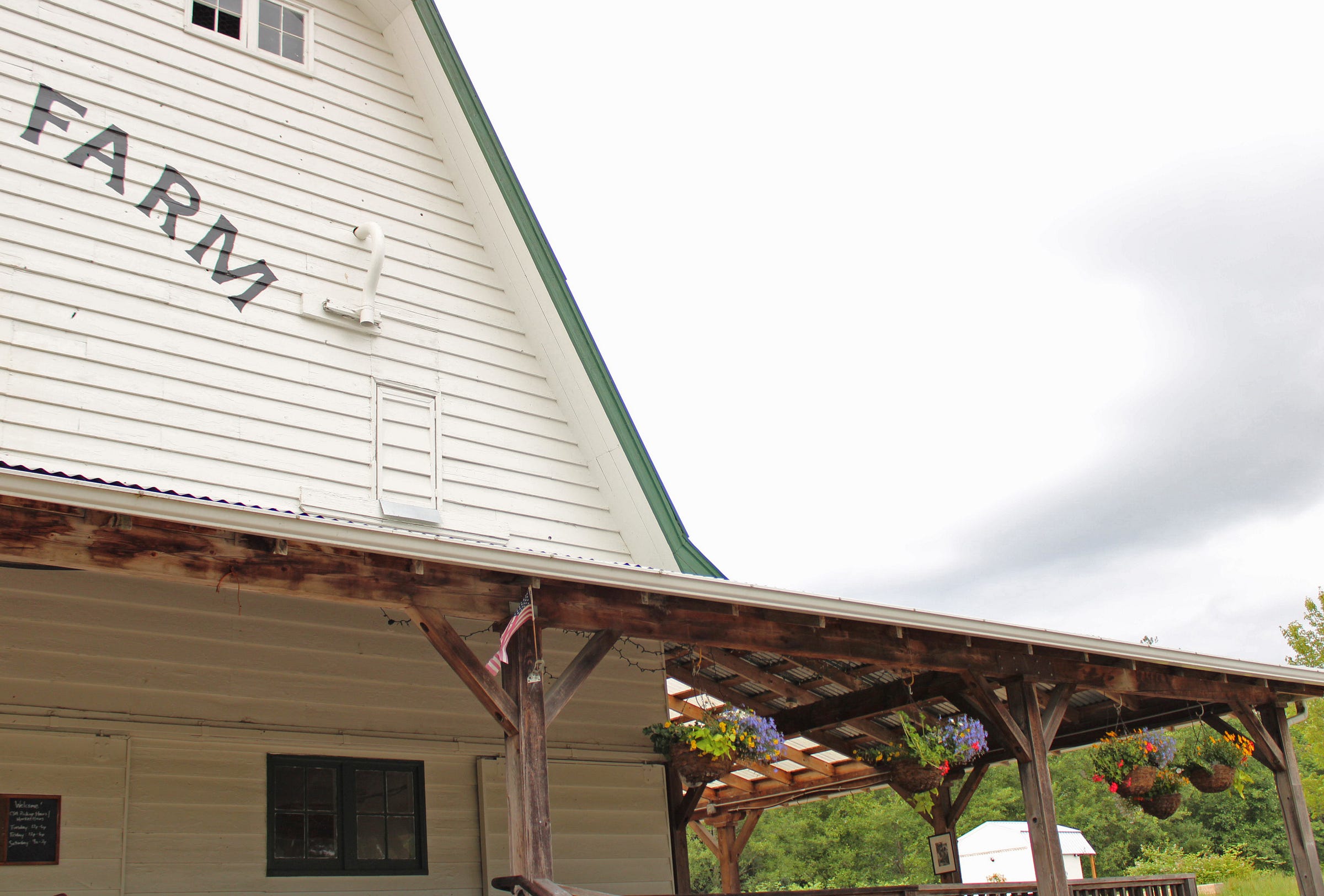
BRB calling my HOA and saying the open burning restriction violates my religious freedom to celebrate the feast of Peter and Paul...
Wonderful stuff Kristin to read in the long evening light in England. Here on the Scottish Border it will not be properly dark for a while yet. A Book for the Hours for sure. There are no bonfires tonight but the wind has been in the West for a few days. The fabled legend of the Thorn goes a long way back, renewed it is said from Glastonbury, even further than St Peter and St Paul.